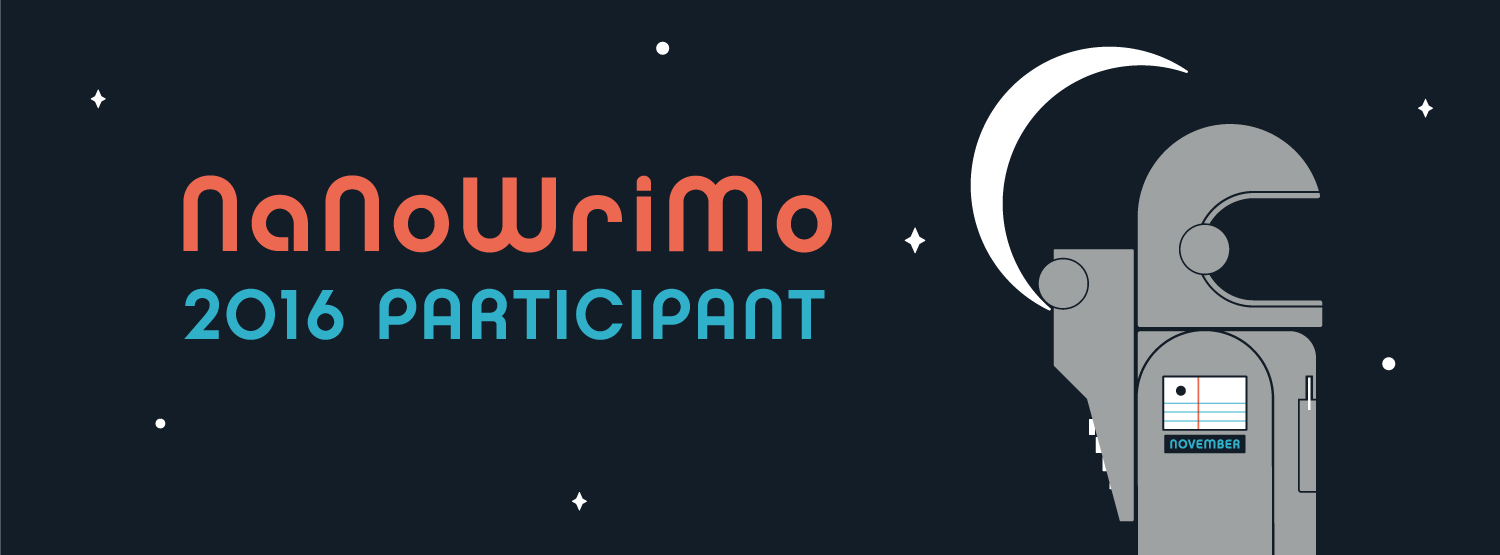It’s the end of November, and for those of us participating in National Novel Writing Month, there exists one of a select few emotions: panic that we’re too far behind, the calm determination of being on track, and the sweet victorious feeling of completion.
Writerly types have big dreams for their fiction babies — and they also tend to lack patience. Agents and editors frequently mention the deluge of manuscript submissions they receive at the start of December, most of which they automatically throw out.
Don’t let that be you! Here, we offer some next steps for you to take between finishing NaNoWriMo and submitting your novel to an agent or publisher.
#1: Set down that manuscript for a month. Maybe even two.
Speaking as someone who’s made attempts at editing a NaNo manuscript in December — you’re not going to be able to focus very well. My advice for editing anything is always to take at least two to three weeks between edits, and your NaNo manuscript is no different.
If you really feel the crunch…
- Swap manuscripts with a friend or beta reader. Make notes on missing pieces, inconsistencies, and word padding. Your notes won’t be helpful if they aren’t constructive!
- Read 2 books outside your genre and 2 books inside your genre. Pick a writing style you admire or something in nonfiction to help you make your world feel more real. (Notes here are helpful, too!)
#2: When you do pick it up again, focus on filling in the gaps.
Don’t give me that look. Your NaNo manuscript definitely has gaps — spots where you wrote “put better dialogue here,” “add a fighting scene,” or “the Special Snowflake learns she’s not really a special snowflake.”
No matter what little (or not-so-little) cheat you used to fill in the space, it’s still a space you need to fill before any real editing begins.
To make this a even a bit easier on yourself…
- Read through your full manuscript first. If you use Microsoft Word, highlight the spot in yellow.
- Write a more thorough summary of what happens in the gap you left. What should the dialogue be about? Where is the fight scene, and who’s doing the fighting? How exactly does Special Snowflake learn she’s not so special? This works especially well for Scrivener novelists.
#3: Get another pair of eyes.
Remember when I suggested swapping manuscripts with a friend or a beta? Yeah, you’re not getting out of that one.
One step in the editing process I’ve always found to be simultaneously most depressing and most helpful is the critique process. In seven years of writing during adulthood, I’ve had in-class critiques, three or four critique groups, and countless creative partners and beta readers. Right now, I’m between writing groups, but making up for it with a writing partner who’s really not afraid to say when my manuscript doesn’t work.
Having someone else read your work can be utterly terrifying, but it’s important to receive feedback from someone who’s less emotionally invested in the work than you are.
There are a few ways you can find people to critique your work.
- Join a critique group. You can find them in all sorts of places: your local Meetup site, on your campus, at your local library or indie bookstore — there’s all sorts of places you might find one.
- Find a critique swap site that works for you. When my local creative writing scene was lacking, I used Critique Circle, though there are countless sites to find critique partners as well as critiques on individual pieces.
- Partner up. Got a friend who also writes paranormal romance YA? A Twitter friend who’s always up to fangirl over a new space opera? While friends aren’t always the best critique partners or beta readers, it’s always worth a shot — especially friends familiar with your genre.
#4: Edit your manuscript the way you wrote it: during a month-long event with pep talks.
If you’ve completed NaNoWriMo, you know the format and structure of this challenge works for you: a specific goal and a specific timeline.
So make it keep working for you.
- Camp NaNoWriMo
Camp takes place in April (replacing Script Frenzy) and has a second session in July. Users set their own word count goals for the challenge instead of sticking to that hard 50k. This is helpful for revising your novel after adding parts: you can set your word count goal for your manuscript length (with a bit extra for additions!) with your daily goal being your editing goal.
- NaNoEdMo
Although not affiliated with the Office of Letters and Light, National Novel Editing Month presents a comparable challenge: complete 50 hours of editing in 31 days, taking place during the month of March.
The NaNoEdMo site has forums, articles on editing, and a tracking system to help you as you make your next novel draft the best it can be.
- Next year’s NaNoWriMo
What’s this? Work on this year’s NaNo manuscript during next year’s NaNo? But I’m done already!
Actually, you’re not done — we talked about this earlier. There are a number of reasons you may want to work on your manuscript again next year: your epic fantasy is only one-third finished; your research on British Empire-era India means massive edits to your steampunk novel; the critique you got back means a massive overhaul on your work.
Revisiting your work after a year is beneficial in a few ways. After you spend time away, you’re much more fresh. I’s also a great opportunity to rewrite.
That’s one major misconception about NaNoWriMo — and about novel-writing in general. The first draft isn’t where you end. It’s where you begin.
—
Feliza Casano founded Girls in Capes and currently edits and writes for all sections of the site. In her approximate 2.3 hours of free time each month, she loves watching anime, reading science fiction, and working on her novels-in-progress. Keep up with her antics at felizacasano.com and follow her on Twitter @FelizaCasano.






